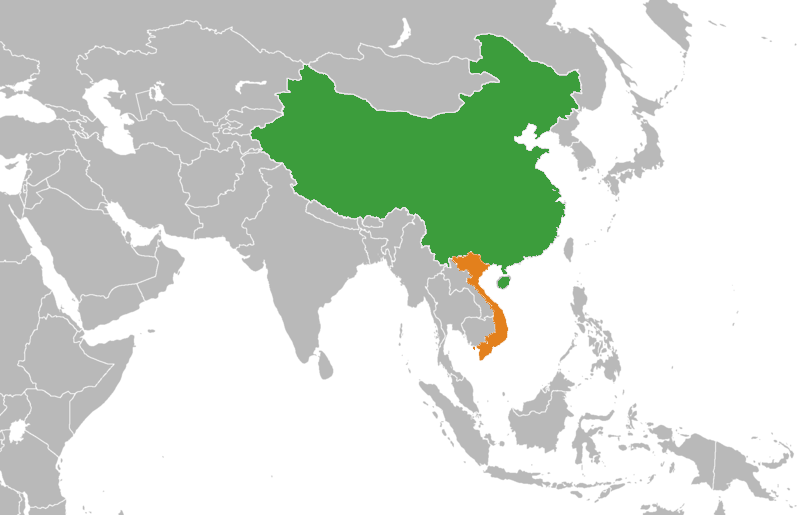China-Vietnam trade: risk and opportunity amidst COVID-19 pandemic

By Yongxiang Yang,Aijiao Liu and Qianfan Shi
Since the end of February, 2020, COVID-19 pandemic has spread rapidly all over the world, which has made the fragile and recovering world economy worse. According to the latest forecast of the International Monetary Fund (IMF) on April 14th, the world economy will shrink by 3% in 2020, down by 6.3 percentage points from the forecast in January, which is the worst economic recession since the Great Depression in 1930s, and worse than the international financial crisis in 2008.On the whole, the normalization of epidemic prevention and control in various countries has had a serious impact on the world economy, and it is difficult for China-Vietnam border trade to be immune to it in the era of globalization. In this unfavorable international economic environment, China-Vietnam border trade will surely undergo a severe test.
Through continuous practice, the Chinese government has finally found effective measures for epidemic prevention, and the normalization of epidemic prevention and control has been formed in every aspect, such as food, clothing, housing and transportation. The China-Vietnam border economy depends on many factors, such as epidemic trend, intensity and effect of prevention and control measures, liquidity of global financial markets and commodity prices. Therefore, in the "post-epidemic era", the Chinese government should actively respond and plan ahead.
Firstly, the normalization of domestic epidemic prevention and control has "risk" to China-Vietnam border trade.
The “risk” has slowed down the economic growth in the border areas between China and Vietnam. In order to achieve overall success in fighting against the epidemic, the China-Vietnam border trade had to reduce the market scale, almost no longer carry out the traditional trade fair so that the amount of trade was reduced. According to the statistics of the General Administration of Customs of Vietnam, the bilateral trade between Vietnam and China has exceeded 100 billion US dollars (equivalent to about 707.97 billion yuan) in recent two years. However, since the prevention and control of the epidemic, the export volume between China and Vietnam has been limited and decreased. By the first five months of this year, the trade volume reached US$ 44.35 billion. Therefore, the proportion of the total border trade between China and Vietnam in the gross national product of both countries has declined, which has reduced the foreign exchange sources of the two countries on the border between China and Vietnam and slowed down the economic development of the border areas between China and Vietnam.
Secondly, the normalization of domestic epidemic prevention and control brings "opportunity" for China-Vietnam border trade.
It can make new breakthroughs in the economic development of China-Vietnam border areas, better achieve win-win cooperation and conform to the development of economic globalization. Under the trend of normalization of epidemic prevention and control in China, firstly, the traditional trade fair of China-Vietnam border trade has quietly changed into diversified online shopping without interest, realizing "contactless shopping" and changing the consumption pattern in China-Vietnam border areas. Secondly, the mode of China-Vietnam border trade starts from small-scale e-commerce, and it is planned to transfer to large-scale e-commerce to optimize its industrial structure.
In addition, in recent years, the Vietnamese government has devoted itself to actively developing e-commerce, trying to gradually improve the economic and trade imbalance in the border trade areas between China and Vietnam. Only when the trade between the two border areas is gradually balanced can long-term sustainable cooperation, development and win-win situation be realized.
The E-Commerce and Digital Economy Bureau of the Ministry of Industry and Trade of Vietnam issued the White Paper on E-commerce in Vietnam in 2020, aiming at evaluating the e-commerce activities in Vietnam and providing general data on this field, so as to better develop e-commerce. Finally, the development of e-commerce can grasp the quantity of buying and selling in time, scientifically implement planned production, and to a certain extent solve the traditional "stacked" sales model and the problems of unsalable products and inflation. In addition, China has rich experience in e-commerce, which can provide new ideas, new ways and new markets for border trade between China and Vietnam.
The normalization of China's epidemic prevention and control not only promotes the transformation and upgrading of the industrial structure of China-Vietnam border trade, promotes the development of e-commerce, and realizes a new economic development mode, but also makes China-Vietnam border trade gradually change to economic modernization, which is more and more in line with economic globalization, more and more accord with the trend of the times, and more and more scientific and reasonable. The transformation of China-Vietnam border trade will be better, faster and more stable, and the strategy of "prospering the border and enriching the people" will be realized.
Based on the above analysis, China's epidemic prevention and control is under the influence of China-Vietnam border trade, and crisis and challenge coexist. If we want to develop the border economy and trade between the two countries in a long-term and sustainable way, the two border areas need to make unremitting efforts.
(Yongxiang Yang, Liu Aijiao, Scholar of Yunnan Police Academy; Qianfan Shi, scholar at the University of Chinese Academy of Sciences)
Recent News

Do not make expressions casting dout on election: EC
14 Apr, 2022
CM Bhatta says may New Year 2079 BS inspire positive thinking
14 Apr, 2022
Three new cases, 44 recoveries in 24 hours
14 Apr, 2022
689 climbers of 84 teams so far acquire permits for climbing various peaks this spring season
14 Apr, 2022
How the rising cost of living crisis is impacting Nepal
14 Apr, 2022
US military confirms an interstellar meteor collided with Earth
14 Apr, 2022
Valneva Covid vaccine approved for use in UK
14 Apr, 2022
Chair Prachanda highlights need of unity among Maoist, Communist forces
14 Apr, 2022
Ranbir Kapoor and Alia Bhatt: Bollywood toasts star couple on wedding
14 Apr, 2022
President Bhandari confers decorations (Photo Feature)
14 Apr, 2022










